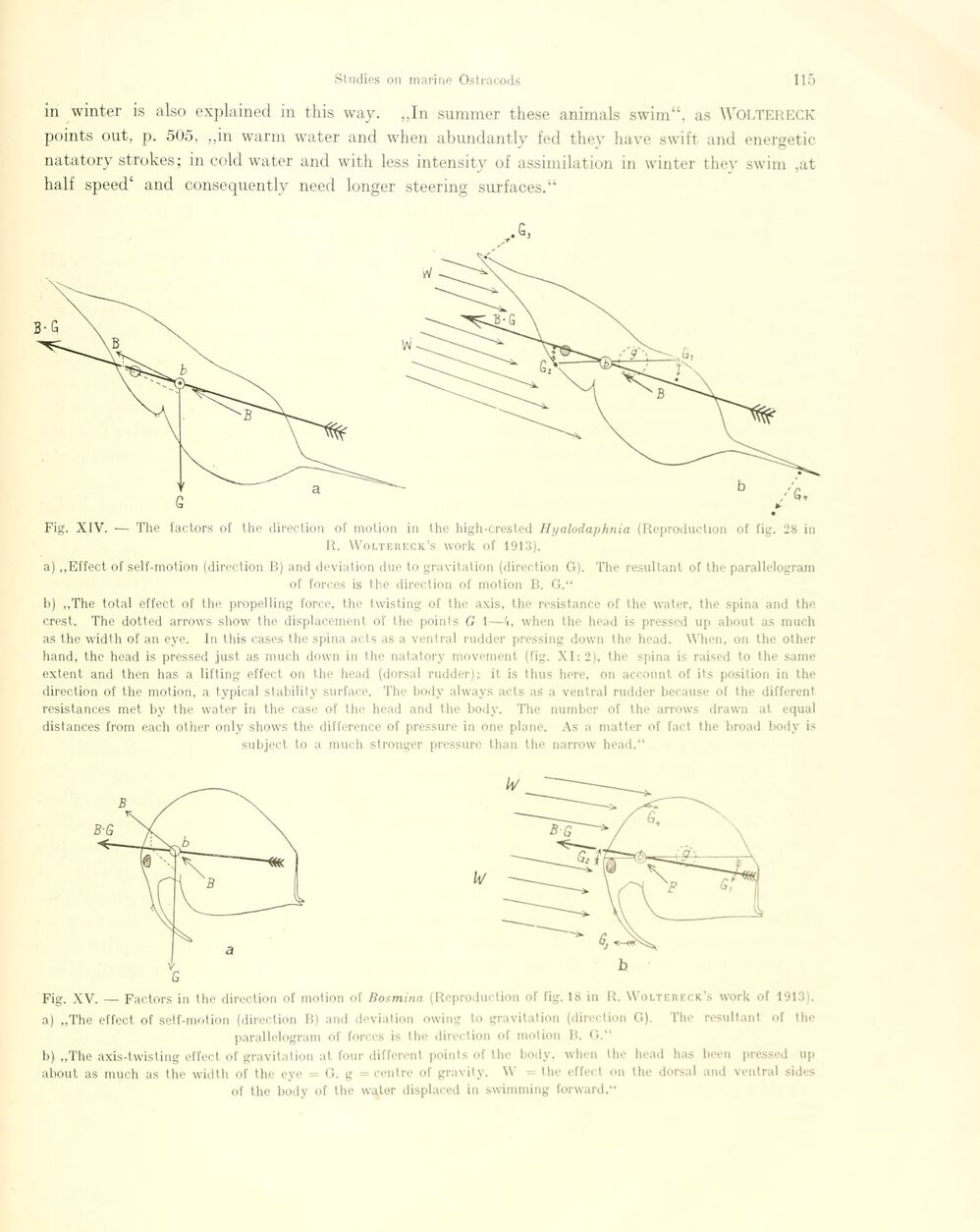
Full resolution (JPEG) - On this page / på denna sida - Sidor ...

<< prev. page << föreg. sida << >> nästa sida >> next page >>
Below is the raw OCR text
from the above scanned image.
Do you see an error? Proofread the page now!
Här nedan syns maskintolkade texten från faksimilbilden ovan.
Ser du något fel? Korrekturläs sidan nu!
This page has never been proofread. / Denna sida har aldrig korrekturlästs.
in winter is also explained in this way. ,,In summer these animais swim“, as WOLTERECK
points out, p. 505, „in warm water and when abundantly fed thev have swift and energetic
natatory strokes; in cold water and with less intensity of assimilation in winter thev swim ,at
half speed4 and consequently need longer steering surfaces.“
Fig. XIV. — The factors of the direction of motion in the high-crested Hyalodaphnia (Reproduction of fig. 28 iu
R. Wolterkck’s work of 1913).
a) „Effect of self-motion (direction B) and deviation due to gravitation (direction G). The resultant of the parallelogram
of forces is the direction of motion B. G.“
b) „The total effect of the propelling force, the twisting of the axis, lia* résistance of the water, the spina and tin*
crest. The dotted arrows show the displacement of lia* points G 1—4, when the head is pressed up about as much
as the width of an eye. In this cases the spina arts as a ventral rudder pressing dowu the head. When. on the other
hånd, the head is pressed just as much down in the natatory movement (fig. XI: 2). the spina is raised to the same
extent and then has a lifting effect on the head (dorsal rudder); it is thus liere, on account of ils position in the
direction of the motion, a typical stability surface. The body always acls as a ventral rudder because ol the different
résistances met by the water in the case of the head and the body. The number of the arrows drawn at equal
distances from each other only shows the difference of pressure in one plane. As a matter of Tact the broad body is
subject to a much stronger pressure than the narrow head.“
Fig. XV. — Factors in Ile* direction of motion of Bosmina (Repro lu* lion of fig. 18 in li. Woltereck’s work ..f 1913 .
a) „The effect of self-motion (direction B) and deviation owing to gravitation (direction G). rhe resultant "f tin*
parallelogram of forces is the direction of motion B. G.“
b) „The axis-twisting effect of gravitation at four different points of the body. when ile- head has been pressed up
about as much as tin* width "f the eye G. g ’ ’*11111* ol gravity. W the effet 1 on the dorsal and ventral sides
of the body of the water displaced in swimming forward.“
<< prev. page << föreg. sida << >> nästa sida >> next page >>